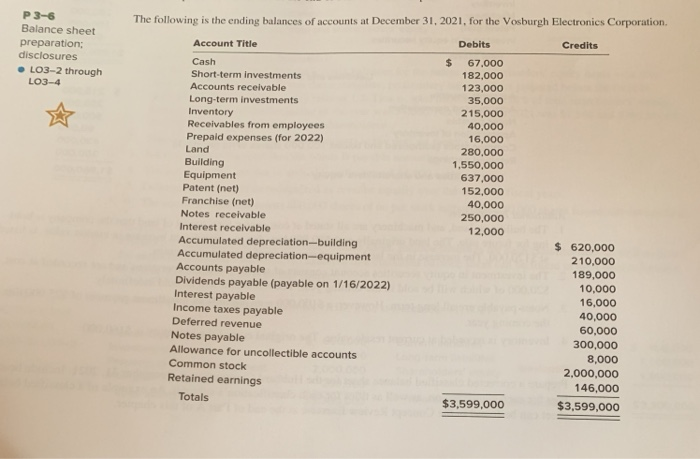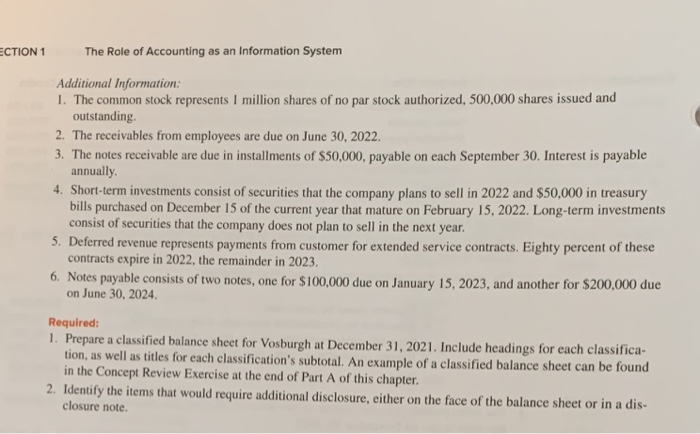P 3-6 Balance sheet preparation; disclosures .LO3-2 through LO3-4 The following is the ending balances of accounts at December 31, 2021, for the Vosburgh Electronics Corporation. Account Title Debits Credits Cash $ 67.000 Short-term investments 182,000 Accounts receivable 123,000 Long-term investments 35,000 Inventory 215,000 Receivables from employees 40,000 Prepaid expenses (for 2022) 16,000 Land 280.000 Building 1.550,000 Equipment 637,000 Patent (net) 152,000 Franchise (net) 40,000 Notes receivable 250,000 Interest receivable 12,000 Accumulated depreciation-building $ 620,000 Accumulated depreciation-equipment 210,000 Accounts payable 189,000 Dividends payable (payable on 1/16/2022) 10,000 Interest payable 16,000 Income taxes payable 40,000 Deferred revenue 60,000 Notes payable 300,000 Allowance for uncollectible accounts 8,000 Common stock 2,000,000 Retained earnings 146,000 Totals $3,599,000 $3,599,000 ECTION 1 The Role of Accounting as an Information System Additional Information: 1. The common stock represents 1 million shares of no par stock authorized, 500,000 shares issued and outstanding 2. The receivables from employees are due on June 30, 2022. 3. The notes receivable are due in installments of $50,000, payable on each September 30. Interest is payable annually 4. Short-term investments consist of securities that the company plans to sell in 2022 and $50,000 in treasury bills purchased on December 15 of the current year that mature on February 15, 2022. Long-term investments consist of securities that the company does not plan to sell in the next year. 5. Deferred revenue represents payments from customer for extended service contracts. Eighty percent of these contracts expire in 2022, the remainder in 2023. 6. Notes payable consists of two notes, one for $100,000 due on January 15, 2023, and another for $200,000 due on June 30, 2024 Required: 1. Prepare a classified balance sheet for Vosburgh at December 31, 2021. Include headings for each classifica- tion, as well as titles for each classification's subtotal. An example of a classified balance sheet can be found in the Concept Review Exercise at the end of Part A of this chapter. 2. Identify the items that would require additional disclosure, either on the face of the balance sheet or in a dis- closure








